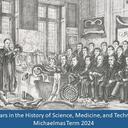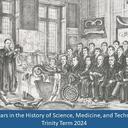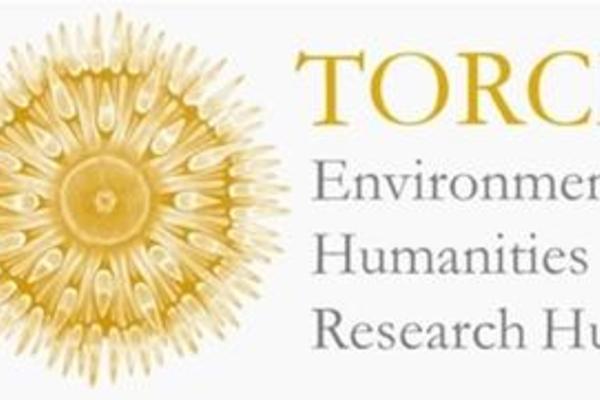Environmental History
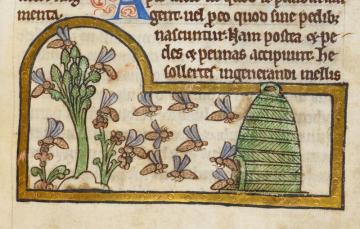
Environmental history investigates humans’ changing ecological entanglements over time. Its practitioners work over different time periods and geographical regions and draw on methodological ideas and practices from various scholarly traditions such as history, archaeology, geography, visual art and the natural sciences.
This interdisciplinary approach is what makes environmental history such an exhilarating field, yet it can also be what divides it. Environmental historians often belong to different departments and faculties, and at Oxford they are yet to share a sub-institutional affiliation. Hence, they are not always informed of relevant work done by their colleagues within the same University.
The Oxford Environmental History Network wishes to foster a virtual community of environmental historians in Oxford. The aim of the network is threefold:
- To connect researchers confronting similar conceptual and methodological challenges, even if working across different regions and time periods
- To showcase environmental history research being undertaken at Oxford and elsewhere
- To publicise relevant events and opportunities occurring both at Oxford as well as internationally
Of Herbs and Pharmaceuticals: Rethinking the Rise of the Pharmaceutical Industry after the Plant Turn
HSMTE Workshop with Jean-Baptiste Fressoz - More and More and More: An All-Consuming History of Energy
Singapore pineapples: catch-cropping, Chinese capitalists, and the colonial state, 1900s–1930s
Infectious Ecologies: Exploring Biological Histories of Epidemics in Colonized Spaces held jointly with the Bodleian Library, University of Oxford
“Archives of Loss and Wonder”: Writing a History of Fossil Heritage in South Asia The Inaugural Cressida Jervis Read Seminar
Red Squirrels, Big Data, and the Birth of Behavioral Ecology
Victorian Women and Algology: The Case of Margaret Scott Gatty (1809–1873)
Book Launch: New Under the Sun: Early Zionist Encounters with the Climate in Palestine
Environmental Humanities
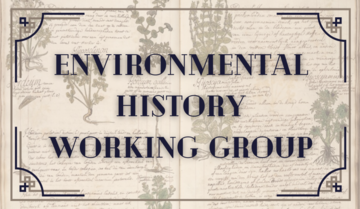
The Environmental History Working Group (EHWG) runs informal meetings for those interested in studying the past in ways that recognize the interactions and interconnectedness of animals, plants, humans, other beings, and the environment. We make space to talk about exciting developments in our fields, new ideas and approaches, and to have interdisciplinary conversations. We try to keep discussions and presentations informal, and encourage anyone at all interested in these kinds of approaches to join our meetings, regardless of research specialism or presumed existing knowledge. Our sessions are mainly attended by graduate students and undergraduates who were considering writing a dissertation or embarking on further study in the field, but all are welcome.
For further information or to join the EHWG mailing list, please email environmentalhistoryworkinggroup-owner@maillist.ox.ac.uk.
You can also find our schedule on OxTalks.
Meeting Details:
Meetings are held each term on odd weeks in the History Faculty. Meeting details will be released at the beginning of each term.
Convenors:
Ryan Mealiffe (DPhil History) ryan.mealiffe@history.ox.ac.uk
EHWG Hilary Term 2025 Schedule
Time: Thursdays 12:30pm to 2:00pm, unless otherwise stated
Meeting Location: Rees Davies Room, Faculty of History, unless otherwise stated
Week 2 (30 January)
Alice Dobinson - Exploring the Evolutionary History of Domestic Ferrets
The domestic ferret (Mustela putorius furo) offers an unconventional but fascinating and unique opportunity to explore the complexities and dynamism of human-animal relationships. Despite being widely used today as working animals, pets, and subjects in biomedical research, the history of ferrets is widely uncertain, complicated by a scarcity of archaeological evidence and ambiguities within the historic record. What is clear, however, is that ferrets are a particularly striking case of how narratives about where and when an animal was domesticated can be built upon ambiguous and limited evidence. I will reinvestigate these narratives through an interdisciplinary approach which weaves together historical, linguistic, archaeological, and genomic evidence. By harnessing the opportunity to investigate one of few domestication events occurring in the historic period, I hope to demonstrate the value of interdisciplinary research and uncover new insights into the domestication of ferrets – and domestication process more generally.
Week 3 (6 February)
EHWG x HSMTE Workshop Roundtable: History of Science and Environmental History at Oxford, Student Perspectives (Organised in association with the HSMTE Workshop)
Organized in conjunction with the History of Science, Medicine, Technology, and Environment (HSMTE) Workshop, this roundtable will explore the current state of the histories of science and environment at Oxford and identify areas of student interest between the two subdisciplines. Environmental history and the history of science share an ever-growing body of scholarship. Over the last few years, the intersection between the two fields has received attention for the potential to investigate sites of knowledge-making and questions of sustainability that inform present action (Hersey & Vetter, 2019). However, the promise found in the ecotone between these subfields remains at risk of methodological and disciplinary tensions. The latter is especially noticeable at Oxford. Environmental history does not hold a place as an established area of study in the history faculty, such as the History of Science, Medicine, and Technology, which itself acts as one of the various loci for scholars interested in environmental questions.
As environmental history continues to coalesce at Oxford, what compelling questions, methods, and issues emerge at the overlap of the history of science and environment? Looking forward, how might we encourage the flourishing of scholarly terrain “neither here nor there” between the history of science and environmental history?
Week 4 (13 February) - The Common Room, Faculty of History
Applying for History of Science, Medicine, Technology, & Environment: An Early Career Panel
(Organized in association with the HSMTE Workshop)
How can early career historians working between the humanities and sciences successfully market themselves? Hear from current ECRs, departmental lecturers, and JRFs working in the history of science, medicine, technology, and environment about their experience after the doctorate and get practical tips for grant, CV, and abstract writing.
Speakers: Dr Hohee Cho (Departmental Lecturer and Research Assistant at Pandemic Sciences Institute, Oxford); Dr Alex Aylward (Departmental Lecturer, Oxford); Dr John Lidwell-Durnin (Lecturer at University of Exeter and Leverhulme Research Fellow, Oxford); Dr Netta Cohen (Junior Research Fellow, Christ Church); and Dr Tom Kelsey (Humanities and Public Policy Officer, Oxford Humanities Division).
Week 5 (20 February)
Andrew McNey - Back Where We Began: Cyclical conceptions of human-environment relationships
In 2018 a dendroecological study of the European Alps and Russian Altai produced convincing data on the existence of a “Late Antique Little Ice Age”. A series of unusually large eruptions in the early 530s resulted in the most significant cooling of the earth’s climate for the last 2 millennium. Encouraged by advances in palaeoclimatology, historians have returned to the study of the 6th century as an area ripe for investigation into human-climate relationships. New archaeobotanical studies of the villages and towns of the Negev identify a decline in agricultural production and economic prosperity beginning in the middle 6th century. The studies argue that we should attribute this decline to the impacts of climate change upon communities farming in challenging environments. In conjunction to this research, archaeologists have embraced the concept of resilience as a useful tool to study not only the historical agency of the natural world, but also anthropogenic responses to the physical environment. Using a resilience framework, a cyclical narrative is constructed wherein societies rebuild systems from their constituent parts following upheaval. In this talk I will test a cyclical approach to the study of the towns and villages of the Negev in the late 6th century. I will discuss community resilience, psychological notions of the cycle of change, and conceptions of circular economies. Does a cyclical approach offer a more accurate reconstruction of human-environment relationships in the past?
Week 7 (6 March)
Emma Nabi-Bourgois - Readers, workers, beetles: the impact of Karel Klostermann’s literary canonization of the forest of Šumava/Böhmerwald on local landscape and communities in the late 19th and early 20th century
The writings of Czech-German author Karel Klostermann (1848-1923) continue to shape Czech debates surrounding the administration the Bohemian Forest (Czech: Šumava, German: Böhmerwald) national park today. We are yet to understand how his work influenced contemporary actors, human and otherwise. This paper considers one of his Czech-language works, Ze světa lesních samot (1894), a more-than-human story of social change and modernisation taking place in the forest of Šumava just before the bark beetle outbreak of the 1870s irreversibly altered the woodlands. By contextualising Klostermann’s work and using a cultural- and social-historical approach, this paper assesses the novel’s direct and indirect impact on its two primary actors: the local population and the local landscape.
People
Those listed below have an interest in both teaching and research surrounding the topic of of environmental history.




